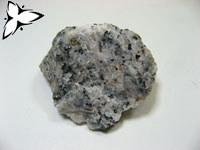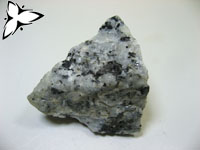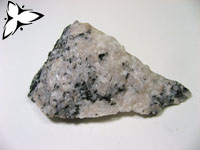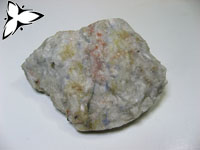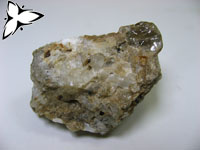![]()
Nepheline, which can also be called 'nephelite,' is a feldspathoid that occurs in intrusive and volcanic rocks with low silica. The word nepheline is derived from the Greek word νεφέλη which translated to "cloud" in allusion to the mineral becoming extremely clouded when placed in strong acid. There are two varieties of nepheline that are distinguished by differing external appearance and in their mode of occurrence. Nepheline is especially suseptibele to alteration, and in the laboratory various substitution products of nepheline have been prepared. In nature it is frequently altered to zeolites, especially natrolite, as well as sodalite, kaolin, or compact muscovite. Gieseckite and liebenerite are pseudomorphs.
![]()
Within the metaphysical realm of minerals, Nepheline has a gentle energy and helps uncover illusions and reveal truths. Nepheline nurtures self love, self esteem, creativity and a zest for life. Nepheline can also help to unleash the bonds of entrenched sorrow. Nepheline has been used to calm children, banish nightmares, treat sleeping difficulties and stop temper tantrums. Nepheline can help in the treatment of stress and stress related disorders.
Please note that MIROFOSS does not suggest in any way that minerals should be used in place of proper medical and psychological care. This information is provided here as a reference only.
![]() Nepheline is mainly used in glass, ceramics, and porcelin products as a flux and to give the products increased resistance to scratching and breaking. Nepheline is also used in rock wool insulation, building stone, and roofing granules.
Nepheline is mainly used in glass, ceramics, and porcelin products as a flux and to give the products increased resistance to scratching and breaking. Nepheline is also used in rock wool insulation, building stone, and roofing granules.
![]()
Nepheline is characteristic of alkaline igneous rocks and very rarely ever assosiated with the mineral quartz.
![]()
Nepheline crystals are not very common usually having the form of a short, six-sided prism terminated by the basal plane. The unsymmetrical etched figures produced artificially on the prism faces indicate, however, that the crystals are hemimorphic and tetartohedral, the only element of symmetry being a polar hexad axis. The low index of refraction and the feeble double refraction in nepheline are nearly the same as in quartz; but since in nepheline the sign of the double refraction is negative, while in quartz it is positive, the two minerals are readily distinguished under the microscope. An important determinative character of nepheline is the ease with which it is decomposed by hydrochloric acid, with separation of gelatinous silica (which may be readily stained by coloring matters) and cubes of salt. For this reason, a clear crystal of nepheline becomes cloudy when immersed in acid.
Other than in the basic mineral form, nepheline can be found in three distinct varieties:
![]()
| Cleavage | Poor | |
| Colour(s) | White, Gray, Brown, Brownish gray, Reddish white | |
| Specific Gravity | 2.59 | |
| Diaphaneity | Transparent to Translucent to Opaque | |
| Fracture | Sub Conchoidal - Fractures developed in brittle materials characterized by semi-curving surfaces. | |
| Mohs Hardness | 6.0 | |
| Luminescence | Non-fluorescent | |
| Lustre | Vitreous - Greasy | |
| Streak | White | |
| Habit(s) | Massive to Prismatic | |
| Radioactivity | Non-radioactive | |
| Magnetism | Non-magnetic | |
| Electrical | Non-Electric |
![]()
No known health risks have been associated with nepheline. However ingestion of nepheline, as with other naturally occurring minerals, is not recommended.
![]()
The following image shows the Elemental breakdown of the mineral nepheline along with the mineral crystal structure.
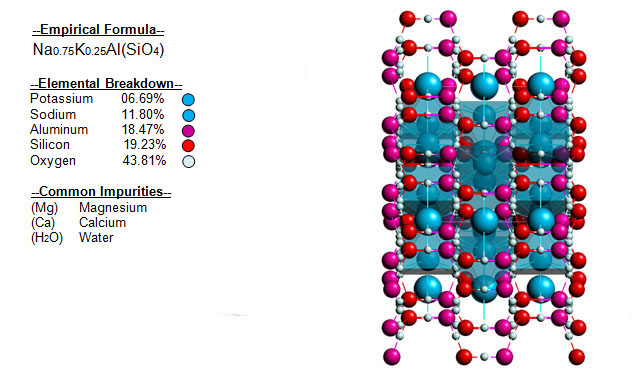
![]()
| Crystal System | Hexagonal |  |
| Class | Pyramidal | |
| Axial Ratios | a : c = 1 : 0.83966 | |
| Morphology | Long to short prismatic | |
| Optical Data Type | Uniaxial (-) | |
| Dichroism (e) | Colourless | |
| Dichroism (w) | Turbid gray | |
| RL Values | nω = 1.529 - 1.546 nε = 1.526 - 1.542 |  |
| Max Birefringence | δ = 0.003 - 0.004(See colour chart at right) | |
| Surface Relief | Low | |
| Dispersion | None | |
![]()
Nepheline can be referenced in certain current and historical texts under the following eight names:
The mineral nepheline can be translated into the following select languages:
| Arabic | نفلين | Bulgarian | нефелин | Chinese (Sim) | 霞石 |
| Croatian | Czech | nefelinický | Danish | nephelin | |
| Dutch | nefeliensyeniet | Esperanto | Estonian | ||
| Finnish | nefeliini | French | German | Carolinit | |
| Greek | νεφελίνης | Hebrew | Hungarian | nefelin | |
| Italian | nefelina | Japanese | 霞石 | Korean | 하석 |
| Latin | Lithuanian | Norwegian | nefelin | ||
| Persian | نفلین | Polish | sjenit | Portuguese | nefelina |
| Romanian | nefelin | Russian | Нефелин | Slovak | nefelinický |
| Spanish | Carolinita | Swedish | nefelin | Tagalog | |
| Turkish | nefelin | Ukrainian | нефелін | Vietnamese |
![]()
Nepheline can be found in many places around the world. The map below shows major documented concentrations of nepheline:
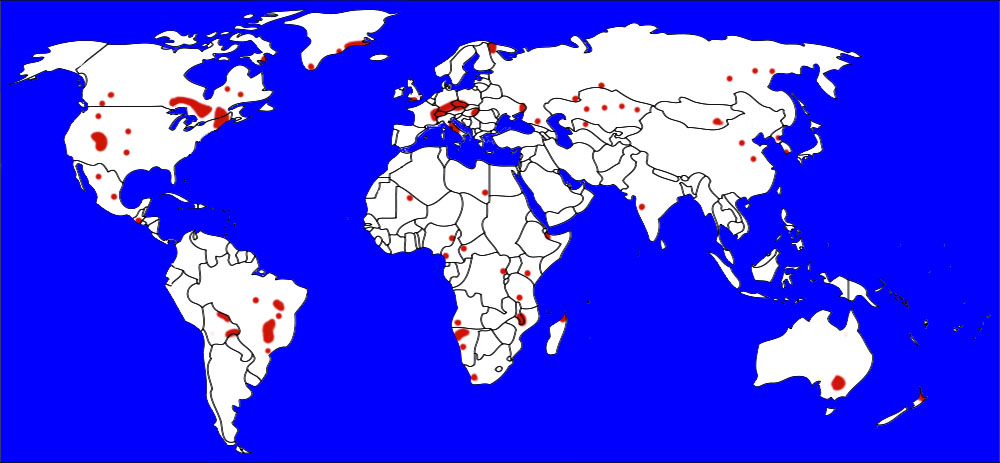
![]()
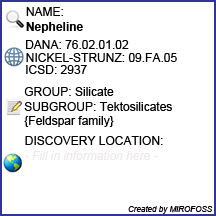 |
The MIROFOSS database offers free printable geological identification tags for personal and non-profit use. These tags can be used to properly identify mineral samples in your collection. -Click here- to download a full size jpeg image for a nepheline identification tag; which can be printed on paper or used with a plastic laser printer. |
 |
What's this? What can I do with it? |
![]()
| Chemical Composition | Vulić, P., Balić-Žunić, T., Belmonte, L.J., Kahlenberg, V. (2011): Crystal chemistry of nephelines from ijolites and nepheline-rich pegmatites: influence of composition and genesis on the crystal structure investigated by X-ray diffraction. Mineralogy and Petrology, 101, 185-194. |
| Crystallography | Friese, K., Grzechnik, A., Petrícek, V., Schönleber, A., van Smaalen, S., Morgenroth, W. (2011): Modulated structure of nepheline. Acta Crystallographica, B67, 18-29. |
| History | American Mineralogist (1972): 57: 1711-1719. |
| History | Rastsvetaeva, R.K., Aksenov, S.M., Chukanov, N.V. (2010): Disordering of Al and Si in nepheline from Graulai (Germany). Doklady Chemistry, 435, 339-342 |
| Geographical Data | Mindat.org. Retrieved on 2013-03-25 |
| Physical Identification | Webmineral.com. Retrieved on 2013-03-25. |
| March 28, 2013 | The last time this page was updated |
| ©2017 MIROFOSS™ Foundation | |
 |
|

